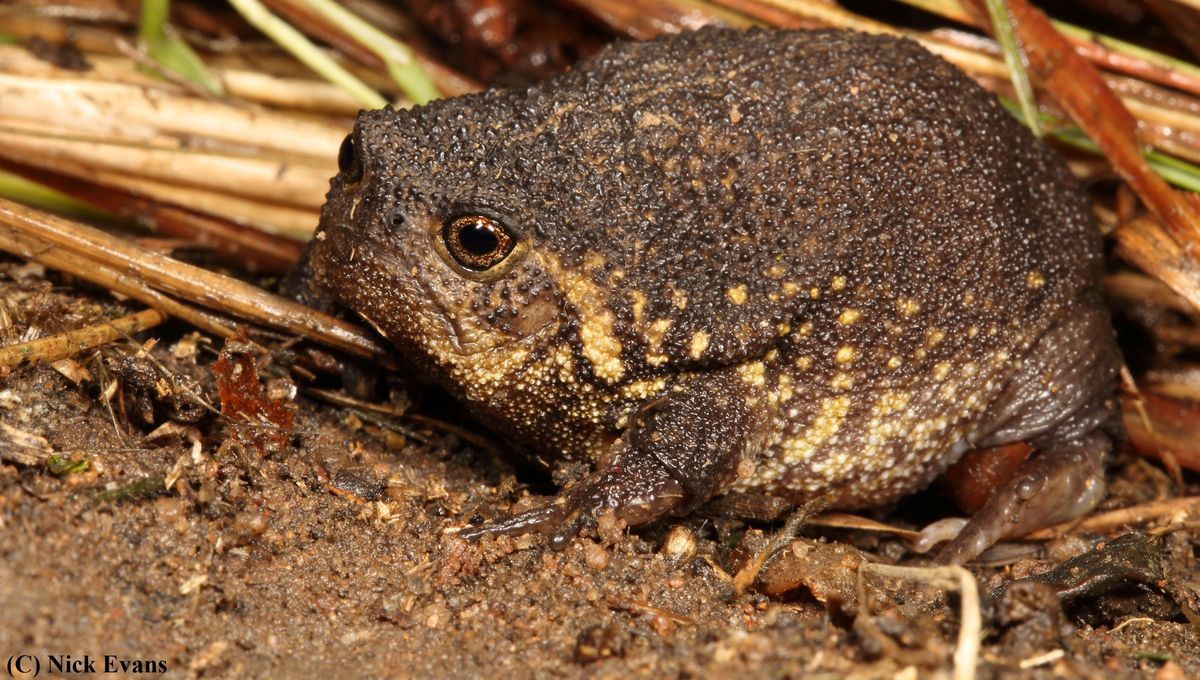
A genus of around 20 burrowing frog species found mostly in South Africa is famous for its members’ short limbs, flat, angry-looking faces, and rounded “golf-ball” like bodies. Now, this collection of tiny frogs is adding one more member, after a new species was discovered almost by accident in South Africa.
It began with a team containing three passionate frog enthusiasts who set out to spot and document every frog in a field guide written by herpetologist Professor Louis du Preez of the North-West University. The group was hoping to find an entirely different species, called Bilbo’s rain frog (Breviceps bagginsi), and when they thought they’d found one, they sent a photo of the frog and a recording of its call to du Preez to confirm.
“There was something curious,” recalled du Preez in a statement. “I thought they had mixed up the images and the sounds. But when I pointed this out, they sent a video, and that’s when I realised that we were looking at a new species.”
With a new species discovery on the horizon, du Preez and colleagues used a combination of genetic analysis and morphology to work out just what they were looking at. Both revealed significant differences in the frog from its closest relative, Breviceps verrucosus; in particular, the new species has a visible eardrum, and the position of its rather grumpy-looking mouth sets it apart from other species in the genus. The frog also produced calls that were shorter, faster, and more frequent than other known species.
The new frog has been named Breviceps batrachophiliorum, with the common name of the Boston rain frog – the holotype had been collected near Boston in KwaZulu-Natal Province, South Africa.
“The species name is a plural noun in the genitive form, which means ‘frog-loving people’. It acknowledges the contributions of Marius Burger, Nick Evans, Cormac Price and Dylan Leonard, who were the first to record and ‘re-discover’ this species, James Harvey, Adrian Armstrong and Kirsty Kyle who provided additional information on this species, and the efforts of the many herpetologists and other nature-lovers who submitted data to the Southern African Frog Atlas Project (1996−2003),” explain the authors in the paper.
The new frog is thought to be found in an area of just over 1,100 square kilometers (425 square miles), a limited range that causes some conservation-related concerns. On top of that, the case of mistaken identity at the beginning of the discovery has also raised alarm bells, having shown that Bilbo’s rain frog is now known only to exist in one population, which could see its conservation status go up to “Critically Endangered”. While this might sound worrying, this new categorization means that both species can be assessed to find out their true distribution.
The study is published in the African Journal of Herpetology.
Source Link: New Species Of South African Rain Frog Discovered, And It’s Absolutely Fuming About It